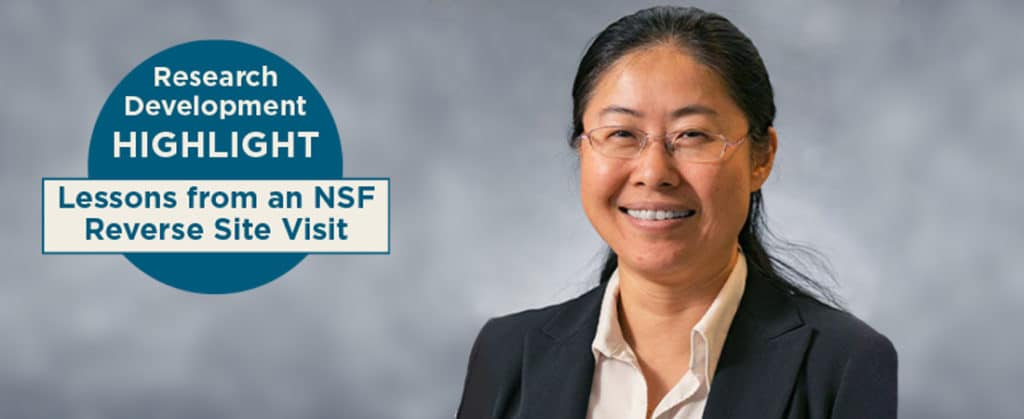When Hairong Qi received notice that the National Science Foundation wanted to conduct a reverse site visit related to her proposal for a National Artificial Intelligence Research Institute, she was excited—and then she remembered how much preparation the team needed to do. Qi had been involved in a similar site visit 10 years ago for CURENT (the Center for Ultra-Wide-Area Resilient Electric Energy Transmission Networks), an NSF Engineering Research Center.
“But I wasn’t that worried,” said Qi, Gonzalez Family Professor and associate department head of UT’s Min H. Kao Department of Electrical Engineering and Computer Science (EECS).
NAIRI, a 5-year $20M program recently launched by NSF, only selects a handful of teams for a site visit. She had one month to pull together a well-coordinated, one-hour virtual site visit, so she immediately contacted the leadership team of the proposed project and her support team at the Office of Research, Innovation, and Economic Development (ORIED). Colleagues Lou Gross, Fred Wang, Leon Tolbert, and Kevin Tomsovic—major players at previous UT site visits—provided invaluable suggestions to set the schedule and focus.
“We went through four practice runs and many hours of preparation,” she said. “Although it was only a one-hour presentation, there were so many things to be taken care of. The amount of support we received from upper administration and ORIED was amazing!”
Qi worked with Diana Moyer, ORIED research development manager, to coordinate the effort. The two of them recently shared a few lessons learned by putting this “complicated puzzle” together.
Visibility
Qi said she learned about the importance of making the team and work visible to the public, especially to the program managers. This required years of collaborative work leading up to this point; otherwise, teams formed just for a proposal would have very little chance of winning no matter how well the proposal was written or how organized the presentation was.
“Strong prior collaboration and publication records coupled with good publicity can help tremendously,” Qi explained.
Graphics
The Tickle College of Engineering’s communications team provided assistance developing strong graphics and visual elements, which were crucial for the virtual presentation.
“We learned the importance of using message-driven, crisp, clean slides,” Moyer said. “It helps to have an overview graphic that you can keep coming back to throughout the presentation.”
Be Prepared
NSF only allowed 10 researchers to participate in the presentation, with no support staff to answer the administrative questions. Moyer said that necessitated a special meeting on the budget, for example, so team members could talk with authority on all aspects of the proposal.
Qi said she couldn’t have pulled it together if not for the support Moyer provided to coordinate all of the moving parts while the researchers could focus more on the technical content. This included setting up the practice runs with external reviewers to simulate NSF site visit as much as possible.
“Diana really went above and beyond helping the team, including reviewing our presentation scripts, editing and integrating the presentation slides, and staying with us over weekends for several hours listening to our rehearsals,” Qi said. “We are also grateful to the support from Dr. Deborah Crawford, vice chancellor of ORIED, who got on the phone and contacted her peers at the partnering universities and prepared an institutional support slide along with the narrative.”
Practice, Practice, Practice
“It also helped to have multiple dry runs and especially the mock-up Q&A sessions in the last dry-run,” Qi said, acknowledging the reviewers—Fred Wang, Leon Tolbert, Lou Gross, Suzie Allard, Suresh Babu, and the associate deans of research at UT’s Tickle College of Engineering and College of Arts and Science, Bill Dunne and Larry McKay—who provided valuable input to help shape the presentation.
In the end, Qi’s team did not receive the award for the AI Institute, but she says she enjoyed the experience and learned a great deal.
“Our team is much closer, and we’re looking for other opportunities to create great proposals with this great team,” she said.
For more information about ORIED’s support for research teams and single investigators, visit research.utk.edu/research-development.
